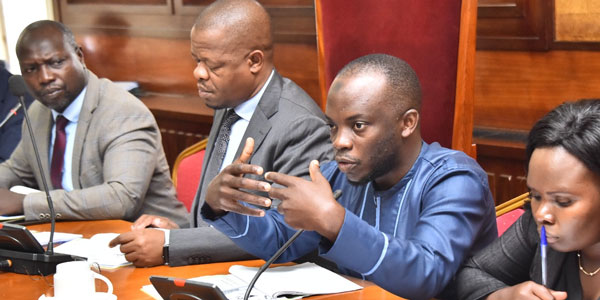
Kampala, Uganda | THE INDEPENDENT | The Shadow Cabinet has called for an expedited appraisal of the impact of the National Data Transmission Backbone Infrastructure and e-Government Infrastructure that was rolled out during the Financial Year 2006/2007 to benefit Ministries, Departments, and Agencies – MDAs.
The government through the National Information Technology Authority Uganda (NITA-U) has announced the extension of more high bandwidth data connection among MDAs onto an optical fibre cable-based network. The newly announced national infrastructure backbone routes include Kampala-Wakiso, Mbarara-Ibanda-Kamwenge, and Ntungamo-Mirama Hills with an expected coverage of 4,298 kilometers across the country.
The project will be financed by the International Development Association (IDA) of the World Bank under the refugee protection framework. Through the Uganda Digital Acceleration Project (UDAP-GOVNET), 53 district headquarters, and 61 local government sites have been connected to the national backbone infrastructure (NBI) under the last mile connectivity project.
NITA-U Executive Director, Dr. Hatwib Mugasa, told URN that under the renewed Digital Acceleration Project, 12 districts hosting refugees will soon be connected to high-speed internet in a bid to promote digital inclusion across the country. They will deploy 80 mobile broadband masts, purchase additional bandwidth, develop a telecentre for refugee-hosting communities, set up an e-waste management center, and expand Wi-Fi hotspots.
Currently, Uganda hosts at least 1.5 million refugees from the Democratic Republic of Congo, and South Sudan among others across 13 districts of Adjumani, Isingiro, Kampala, Kamwenge, Kikuube, Kiryandongo, Kyegegwa, Koboko, Lamwo, Madi-Okollo, Obongi, Terego, and Yumbe.
But, Mawogola County South Member of Parliament, Gorreth Namugga, the Shadow Minister for Science, Innovation and Communication Technology tasked NITA with their impact on improving e-services across the beneficiary local governments and MDAs citing poor performance of the system which she described as being ‘on and off.
Meanwhile, Joyce Bagala Ntwatwa, the Mityana District Woman Representative expressed concern about the increasing level of insecurity arising from Uganda’s internet backbone system. The Authority reported that the current cyber threat awareness in the country stands at 87 percent.
To address the fears of the legislators on impact and security, Richard Obita, the Director for Planning, Research and Development at NITA-U said public sensitization is ongoing to create awareness on existing cyber security threats.
Obita also revealed that the Authority contracted an independent firm to undertake the assessment of the Digital Acceleration Project as a requirement by the World Bank, and the report analysis will soon be shared with Parliament’s Committee on ICT for feedback.
The NITA officials also revealed that they are providing a platform to integrate the different systems used at the administrative centers, and pushing for the reduction of taxes on the unit cost of a smartphone on the market aimed at improving access to e-governance services.
World Bank’s GovTech Maturity Index (GMTI) 2022 report that reflects trends in the Public Sector Digital Transformation in 198 Global Economies indicated that Uganda’s GovTech Maturity index value has risen from 0.639 in 2020 to 0.858, thus Uganda moved from Group B to Group A among the GovTech Leaders.
The World Bank`s GovTech approach represents the current frontier of government digital transformation which focuses on 4 areas; Core Government Systems, Public Service Delivery, Citizen Engagement, and GovTech Enablers.
****
URN
 The Independent Uganda: You get the Truth we Pay the Price
The Independent Uganda: You get the Truth we Pay the Price



